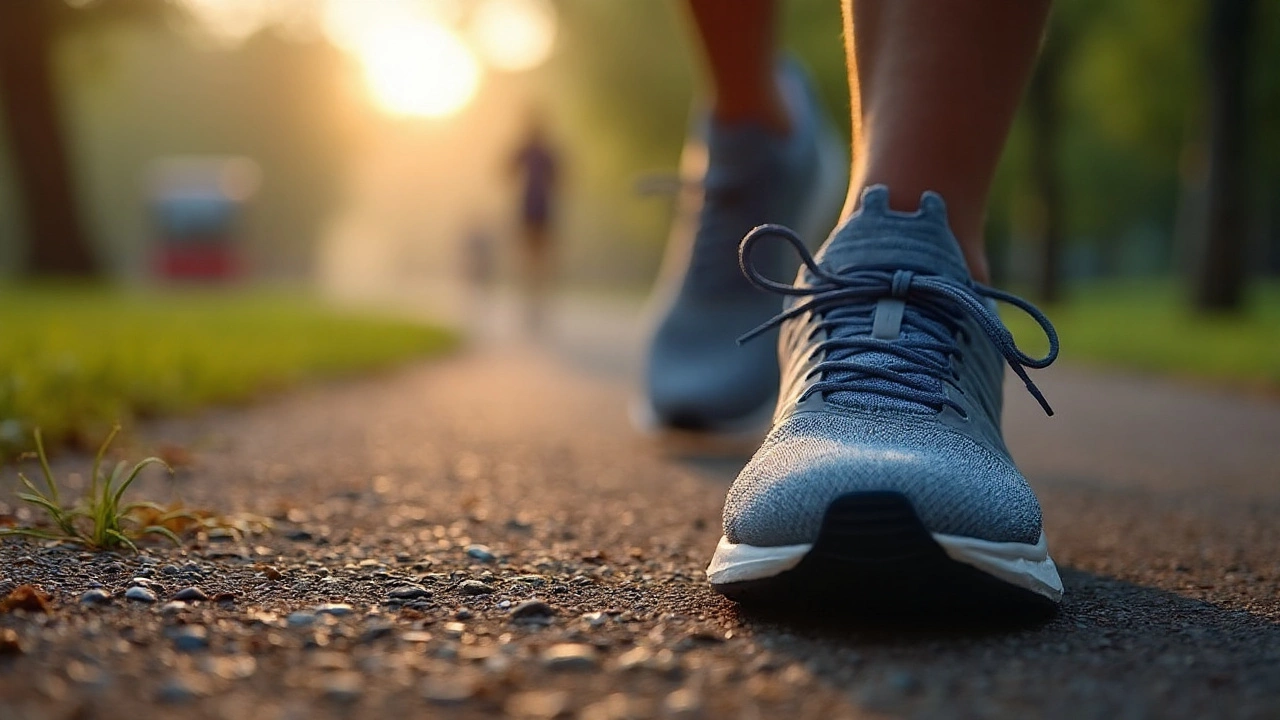Walking Shoes Fit: How to Pick the Right Pair for Everyday Comfort
When you buy walking shoes, the first thing to think about is fit. A shoe that’s too tight will chafe, too loose will slip, and the wrong arch support can cause pain later. The good news? You don’t need a fancy specialist to get it right. Follow these easy steps and you’ll be walking on clouds without wasting money.
Measure Your Feet the Right Way
Most people buy shoes based on size charts that assume a standard foot shape. That’s a gamble. Grab a piece of paper, stand on it, and trace the outline of each foot. Measure the longest point (heel to toe) and the widest part across the ball of the foot. Write those numbers down. Compare them to the brand’s size guide – focus on length first, then width. If you’re between sizes, go up. Your foot swells during the day, so measure in the afternoon when it’s at its biggest.
Check Arch Support and Cushioning
Walking puts repeated stress on the arches. Look for a shoe with a built‑in arch panel that matches the shape of your foot. If you have flat feet, you’ll need a shoe with strong arch support; if you have high arches, a softer, more cushioned sole works better. Press the mid‑foot area with your thumb: a little give is good, but a squishy feeling means the shoe won’t hold your foot properly.
Next, test the cushioning. Stand on a hard surface and feel the impact when you heel strike. A good walking shoe should absorb that shock without feeling like you’re stepping on a pillow. Too much foam can make your foot feel “lost” inside; too little and every step becomes a jolt.
Don’t forget the toe box. Your toes need room to wiggle. A snug toe box causes blisters and can even lead to bunions. When you try the shoe on, wiggle your toes. You should feel a thin layer of material at the sides, not a tight squeeze.
Practical Try‑On Tips
Always try shoes on with the socks you plan to wear while walking. Thick sports socks add a half‑size, thin socks stay true. Walk around the store – not just stand. Pay attention to how your heel feels; it should stay snug without rubbing. If the shoe slides out when you lift your foot, it’s too loose.
Take the shoes home for a day. Many stores let you keep them for a short trial. Wear them on short walks and notice any pressure points. If nothing feels off after a few hours, you’ve likely found a good match.
Lastly, remember that quality matters. A well‑made walking shoe might cost a bit more, but it lasts longer and protects your feet better. Think of it as an investment in your health.
By measuring, checking arch support, and testing in‑store, you can avoid common pitfalls and pick walking shoes that truly fit. Your feet will thank you, and every stroll will feel easier. Happy walking!

Should Your Toes Touch the End of Your Shoes When Walking? Fit Guide and Toe Room Rules
Wondering if toes should touch your shoe's end when walking? Get the exact toe room, fit tests, pro tips, and fixes for pain, numbness, and black toenails.




